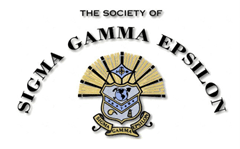Abstract
The Massena-Cornwall earthquake (September 5th, 1944) is the largest earthquake in New York state history. Two epicenters have been previously proposed (Milne, 1949; Dewey and Gordon, 1984); however, they are separated by 15 km, an error that could associate each proposed epicenter with two different local faults. Due to the lack of standardized seismic-array data, there is value in approaching this event using an unconventional data set. The methodology of MacDonald and Wentworth (1952) was executed through ArcMap 10.5.1 to yield an area most likely to contain the epicenter. One-hundred fifty-four earthquake-rotated headstones from 15 cemeteries within ~35 km of Massena, New York/Cornwall, Ontario were measured for angle of rotation via a digital goniometer (0.1 ̊ resolution). The mean angle of rotation is 1.9° (cf., 0.1° for unaffected, post-1944 headstones: p2area centered in the Saint Lawrence River (proposed epicenter at N45.014, W74.815) six miles northeast of Massena, NY. This area is bisected by the Gloucester Fault; an extension of the Ottawa-Bonnechere Graben. This project is an improvement on previous studies of the 1944-rotated headstones (e.g., Berkey, 1945) by analyzing quantitative rotational data within an ArcMap framework. These refined data implicate a rupture along an extension of the Gloucester Fault—a potential threat to the nearby Moses-Saunders Power Dam.
Recommended Citation
Walser, Sandra L. and Stewart, Alexander K.
(2019)
"Earthquake-Rotated Headstones as a Means of Re-evaluating Epicentral Location of the 1944 Massena-Cornwall Earthquake: New York, United States and Ontario, Canada,"
The Compass: Earth Science Journal of Sigma Gamma Epsilon:
Vol. 90:
Iss.
1, Article 1.
DOI: https://doi.org/10.62879/c80148501
Available at:
https://digitalcommons.csbsju.edu/compass/vol90/iss1/1
